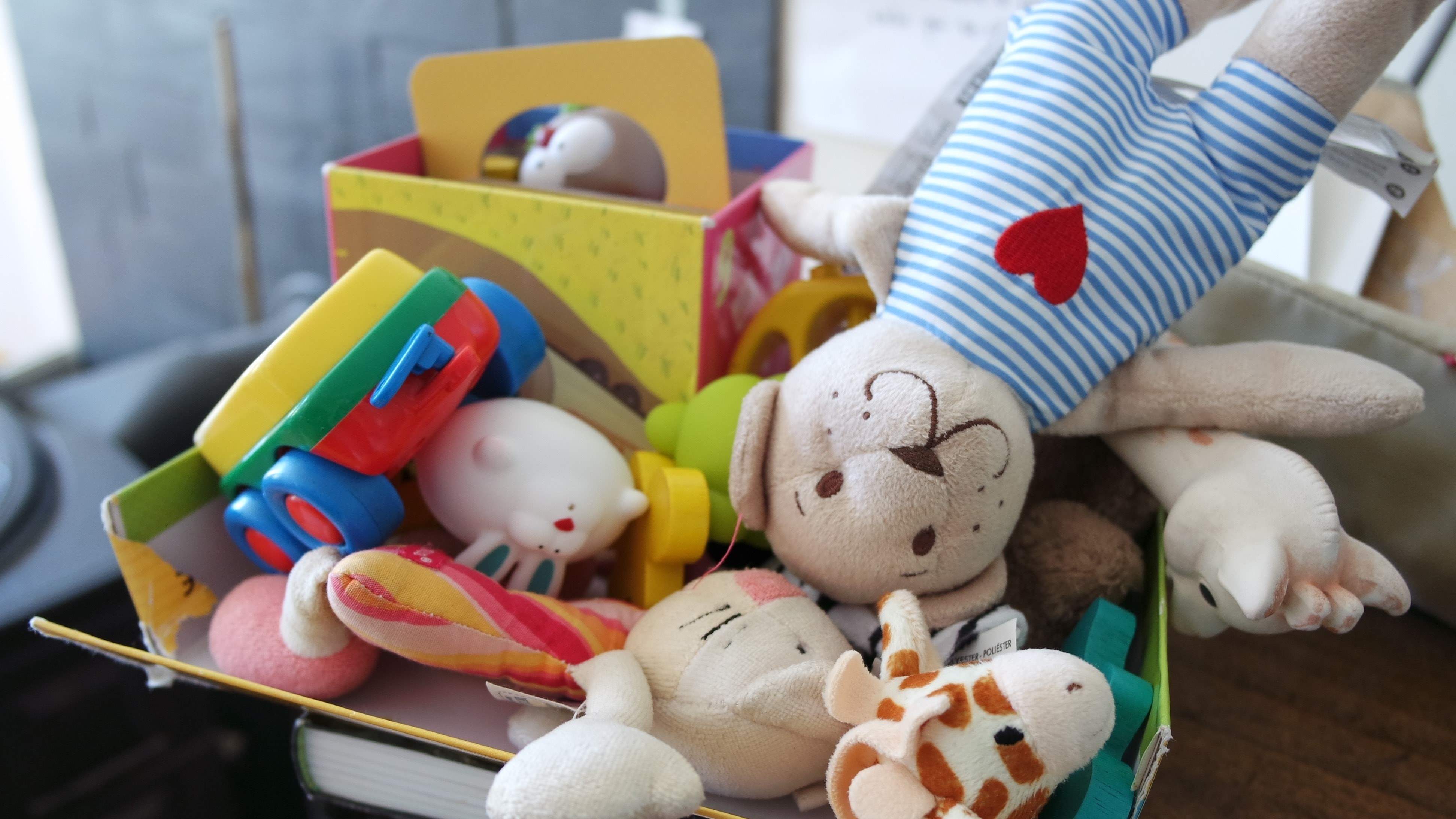Get ideas to help you decide which toys (if any!) to buy

According to Statista the average annual spend on toys in the United Kingdom in 2019 was £299.[1] When taking into account gifts as well as toys bought by members of the household, another survey suggested the average spend per child per year was £750.[2] If you’re thinking about spending a bit less this year, or just want to get good quality toys for your child, read on.
The Toys That Inspire Mindful Play and Nurture Imagination (TIMPANI) study was a research study that took place from 2010 until 2019 in America.
The researchers watched how children aged between three and five years played with toys, with the aim of finding out which toys were best for supporting intellectual, creative, social and verbal interactions.[3]
They put together a summary of ‘what makes a good toy’ based on observing children playing with 100 toys over the ten-year study.[4]
A good toy is …
Simple[4]
There are lots of toys around that do all sorts of things, they might move, talk, light-up or spin round. The researchers suggest these toys provide entertainment but that they don’t encourage ‘rich play’.
Simple toys, for example a simple doll rather than one that talks, usually result in more elaborate play and encourage more creativity and language.
Open-ended[4]
Open-ended toys can be played with in lots of ways.
Sometimes closed toys such as a jigsaw puzzle or board game can help children develop specific skills, and the activities linked to skills in your child’s journey will help you see when these might be useful.
Open-ended toys support rich play, children think creatively about how to use them and then talk about their ideas. The researchers also found that these toys kept children’s attention for longer than toys that had just one function.
Non-realistic[4]
Sometimes children love playing with a child-sized version of a real object. A mini kitchen, pans and toy food might result in long periods of really wonderful pretend play.
However, in this research they found that toys that didn’t look like one thing encouraged problem-solving, creativity, and conversations as children decided how to use them in their play.
They also identified two types of toy that resulted in what they describe as ‘high quality’ play.[4]
Construction toys[4]
These are things like wooden blocks or Duplo bricks, that children can put together in different ways, not kits that are designed to make a specific model.
Replica play toys[4] (we sometimes call these small world toys)
These are things like little people, animals or vehicles, children use these to recreate or imagine a range of situations in their play.
They can be used alongside open-ended toys – perhaps using blocks to make a castle for the animals or a road for the cars and so on.
What about babies and toddlers?
The findings from this study are useful when thinking about toys whatever your child’s age. But, as they didn’t include babies and toddlers in the research, try to think about the skills your child is developing and what will support those (your activities screen will help with this).
Babies
Babies master lots of skills through their interactions with others and by moving themselves and holding, looking at, and mouthing objects. So, toys for your baby might simply be safe objects to explore and things that might encourage movement. And lots of the things that support your baby’s development won’t involve any toys at all!
You can read more about how and why babies play with objects in this article.
Toddlers
Your toddler will continue to need to play with a variety of objects as they learn more about what they can do with them and will also enjoy things that will encourage movement or maybe climbing.
They’re likely to begin to copy the things they see adults around them doing, which is the first step to imaginative play. Which means simple toys linked to everyday activities are great for them as well as open-ended toys that they can use in different ways as they play.
You can read more about developing pretend play in this article.
Don’t forget toys that aren’t toys!
And finally, your child will learn from play with lots of things that aren’t actually toys – you'll see most of our activities use everyday objects rather than, or alongside, traditional toys.
These are often open-ended and simple so can be really good ‘toys’ for supporting children’s play.
Make sure anything you give your child to play with is safe for their stage of development.
Your app will help
Keep your child’s skills up-to-date to get play ideas that are perfect for them. Knowing what they’re learning will help you think about if a particular toy would be useful, so you don’t end up with loads of things they don’t play with.
References:
[1] Tighe, D. (2022, 30 May). Toy spend per child in Great Britain 2013-2019. Statista. Toy spend per child in Great Britain 2013-2019 | Statista
[2] Fonatain-Powell, L. (2022). Toy waste in 2021: The Whirli report. Toy Waste In 2021: The Whirli Report - Blog | Whirli Toy Box Subscription
[3] Eastern Connecticut State University (no date). TIMPANI toy study. TIMPANI Toy Study - Eastern (easternct.edu)
[4] Eastern Conneticut State University (no date). What makes a good toy? Lessons learned from 10 years of the TIMPANI toy study. What Makes a Good Toy - Eastern (easternct.edu)